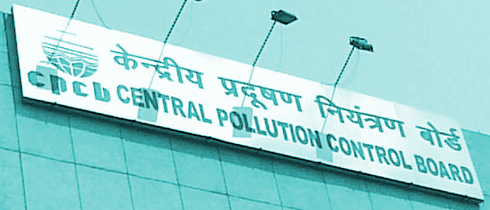Air pollution: Beijing or Delhi, which is worse?
(from Newzzit; the original story is here http://newzzit.com/stories/air-pollution-beijing-or-delhi-which-is-worse)
While India and China would like to out-compete each other in every other respect, this is one competition in which they won't mind being the second-best

Research after research has labelled China as the world's worst polluter, with it's capital Beijing being the measure of what all is wrong with the country's environment policy. Just a year ago, in January 2013, Beijing was trapped in a smog blanket having the concentration of particles with a diameter of 2.5 microns or less reaching 900 parts per million. As it was almost 40 times the safe-limit advised by WHO, alarm bells started ringing and the government, finally, decided to embark on corrective measures.
Scale of the problem
The Economist in one of it's recent article noted, “China is now emitting almost twice as much carbon dioxide as the next-biggest polluter, America. At current rates, it will produce 500 billion tonnes of carbon dioxide between 1990 and 2050—as much as the whole world produced between the start of the Industrial Revolution and 1970.” Almost three-quarters of energy production in China is dependent on coal and the demand for automobiles is increasing rapidly. This has resulted in making respiratory and heart diseases related to air pollution the leading cause of death in the country. The implications are financial too as noted by the World Wildlife Fund (WWF) recently. “Various studies estimate pollution costs the Chinese economy about 7-10% of GDP each year,” WWF said. The situation is so precarious that the Chinese government has announced setting up of a US$1.65 billion fund to fight air pollution, offering rewards for firms which clean up their operations.
The first of which is to loosen up the aura of secrecy surrounding pollution figures. The government has mandated 15,000 firms including the biggest culprit state-owned ones, to publish their pollutants discharge data in real time. In Beijing alone, a total of 1,200 polluting companies are ordered to either upgrade or close their facilities by 2016. The companies are also required to install pollution control devices, which determine the amount of coal burned by them. Additionally, a national target for carbon-dioxide emissions per unit of GDP is being put in place.
Furthermore, the number of vehicles in Beijing will be capped at six million by the end of 2017, as well as the sale of new energy vehicles will be promoted in order to reduce the total vehicle fuel consumption.
One year hence
All these efforts seem to be paying off, as come January 2014, Delhi seems ahead of Beijing in terms of unbearable air for it's residents.
Daily pollution figures of both cities collected by a Delhi-based non-profit Centre for Science and Environment (CSE), between the period from October 2013 and January 2014, have revealed that “in the past four months, only one day would qualify as excellent and four days as good if Beijing’s health alert system is applied to Delhi’s winter pollution”. This is because Delhi seems to be lacking Beijing's scale, stringency and pace of action, CSE claims.
A January 2014 news report published in the New York Times (NYT) indicated the worsening situation in Delhi as compared to Beijing. “For the first three weeks of this year, New Delhi’s average daily peak reading of fine particulate matter from Punjabi Bagh, a monitor whose readings are often below those of other city and independent monitors, was 473, more than twice as high as the average of 227 in Beijing. By the time pollution breached 500 in Beijing for the first time on the night of Jan. 15, Delhi had already had eight such days. Indeed, only once in three weeks did New Delhi’s daily peak value of fine particles fall below 300, a level more than 12 times the exposure limit recommended by the World Health Organization,” NYT noted.
Overall too, India seems to be faring worse than China in controlling air pollution. WHO estimates that India has the world's highest deaths due to asthma and other chronic respiratory diseases; a recent study has indicated that Indians have the world's weakest lungs; and an analysis by Yale University, US, has ranked India 155 out of 178 nations in terms of air quality.
And the situation, at least in Delhi, doesn't seem to be improving soon. Unlike Beijing, the Delhi government does not put out information or real-time monitoring data in a public-friendly manner for the layperson to understand. Awareness campaigns and health advisories are also nearly absent.
“Over the years, reporting on air quality by the Indian news media has grown but this needs to be more consistent and aggressive to inform people to help push the government to take stringent steps to control the air pollution. The new media including social media has an important role to play,” argues CSE.
Other measures that need to be considered by the government in Delhi include imposing an annual road tax, raising the parking rates, improving public transport, limiting the number of vehicles (much like Singapore and Beijing) and keeping the CNG prices lower than diesel, experts have advised.
